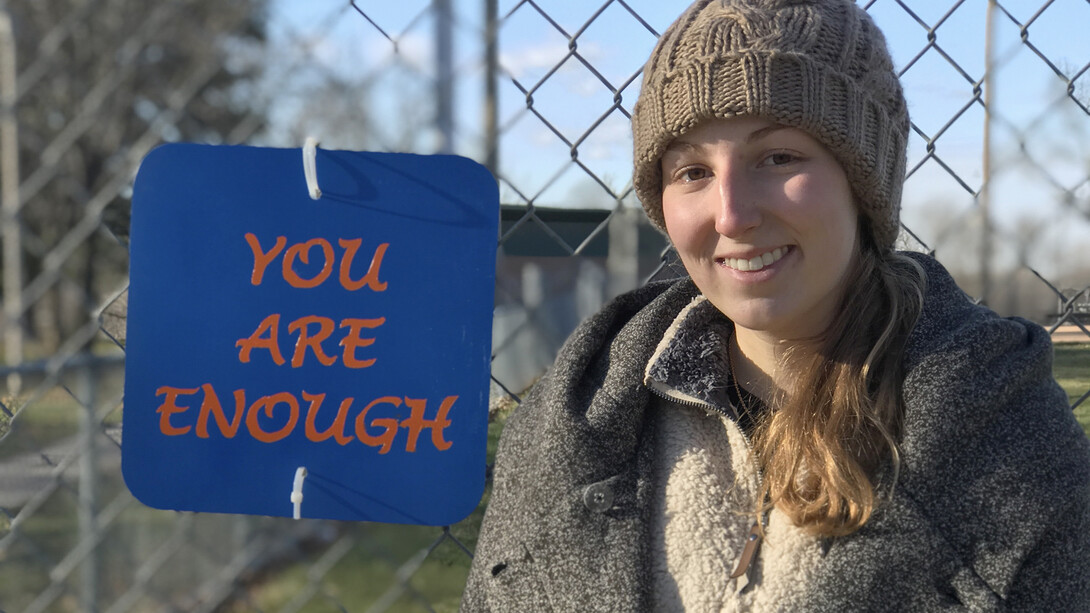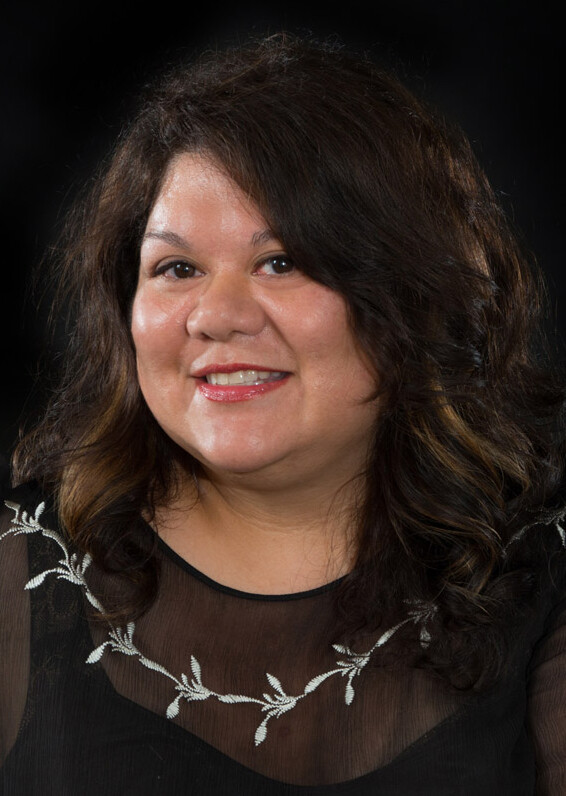
Trading spray paint for handmade signage, 24 Nebraska honors students tagged Lincoln fences with positive (and easily removable) street art on Dec. 5.
The project was the culmination of a semester-long course that explored the history of street art (what some might call graffiti) and presented the students with a series of creative challenges.

“This was a first time honors seminar that was previously offered as a 400 level lecture course with similar projects,” said Sandra Williams, an associate professor of art who led the class. “The projects were the focus. They were designed to get the students to develop agency, or manage their own learning, which is an important exercise for their first semester of college.”
Lectures focused on public art since the 1960s and how communities (particularly the Bronx in New York City) have responded with art when negatively impacted by public policy. Class projects ranged from creating a protest poster/peace sign, making a self-published zine, and designing the positive message signs.
Grades were based solely on the creative projects, with lectures and classroom discussions designed to inspire ideas. That design challenged many of the students, who were more accustomed to learning through a classic attend lecture then take a test curriculum model.
“It was stressful to be in a class where there was no specific outline or defined expectations,” said Taylor Schendt, a freshman psychology/pre-medicine major. “I used to tell people that street art — which I thought would be just an art history lecture course — was my hardest class. But, it became a very enriching process.”

While students worked on the projects, they were encouraged to discuss the work, lecture topics and the motivations behind their designs.
“We were in this class, physically making art, but at the same time the work inspired some very healthy discussions,” Schendt said. “It became a place where we could talk, debate and have a civil conversation. And you didn’t have to agree with everyone.
“It was a safe place where we could voice opinions and discuss them reasonably like adults should.”
For the final project, Williams supplied each student with a blank street sign. The lesson explored the use of effective typography in communicating a message. And, classroom discussion centered on vandalism that featured hateful messages painted along Lincoln’s MoPac Trail earlier this year.
“We are given directives via signage constantly,” Williams said. “So, we got these blank street signs and students were asked what would they like to say, what do people need to hear that they never do.
“The results were beautiful.”

For Anna Krause, a freshman history major, selecting a message was easy.
“My mom passed away when I was 2. I have no memory of her,” Krause said. “So, I wanted to incorporate this idea of reminding people to call their mom.”
She felt the message was particularly important for college students, who can easily feel too busy and cut out calls home.
“My hope is that the sign inspires someone to take a moment and call their mom just to see how she is doing,” Krause said. “It’s a simple message and a little bit in your face, but it makes you pause and think about a relationship that not everyone has.”
Schendt chose “You Are Enough,” a sentiment that reflects on individual struggles with inadequacy. Other designs included messages like “Radiate Positivity,” “Talk Less, Smile More,” and “Adventure Always.”
The signs were placed in public spaces throughout Lincoln, attached to fences by easily removable plastic ties. The students plan to leave the signs up for a week and return to see if they remain.
“This class was amazing in terms of personal growth for many of us,” Schendt said. “For me, I learned the importance of being unapologetically who you are. It also reiterated the importance of having balance in your life. Math and science are great, but at the end of the day, being a well rounded human being and having experiences in many different things is what is important.”
Williams plans to offer the honor seminar, “Street Art: Art in the Urban Environment” (189H) again in fall 2018.
Though the class presented difficult challenges, Krause recommended taking it to other future Nebraska honors students.
“This class taught me how to express myself in ways I’ve never experienced before,” Krause said. “Art doesn’t have to be perfect and it doesn’t have to measure up to the standards of others. It just has to be true and from a place that means something to me.”








